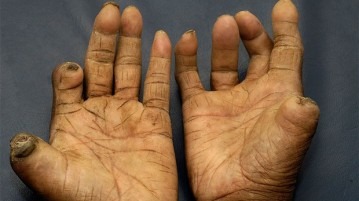Raoul Follereau is credited to organize the World Leprosy Day in 1954. He said, “so that people affected by leprosy could be cared for like all others who are ill and so that those in good health could be cured of their absurd and often criminal fear of this disease and those who are affected by it”. Leprosy is a major disease affecting millions of people all over the world. The worst aspect about this disease is that, there is a visible discrimination against the patients. They are deprived of their basic rights. Not just society but also the family members of the people affected by leprosy are accused of discrimination against these innocent souls.
World Leprosy Eradication Day aims to foster respect for the rights and dignity of those who are affected by this disease. Though, much needed to be done to eradicate discrimination against them but the United Nations has initiated several positive steps to counter this global phenomenon. World Health Organization (WHO) has created “Enhanced Global Strategy for Further Reducing the Disease Burden Due to Leprosy 2011-2015”. According to new guidelines, “Constant efforts should be made to ensure that discriminatory, derogatory or undignified references to persons affected by leprosy are avoided altogether”.
A new set of Draft Guidelines and Principles is being finalized by the advisory committee of the United Nations Human Rights Council. The documentation will be submitted in the 15th Session of the Human Rights Council. UN has paid special attention to promotion of equity and equal opportunities for people affected by leprosy. The United Nations is having close consultation with scientists, members of the ILEP and medical experts to completely eradicate this problem. On World Leprosy Eradication Day, fundraising and awareness events are organized in many parts of the world. The day calls upon all the humans to accord dignity and respect to the persons affected with leprosy.
Leprosy
Leprosy, also known as Hansen’s disease (HD), is a chronic infection caused by the bacterium Mycobacterium leprae and Mycobacterium lepromatosis. Leprosy takes its name from the Latin word Lepra, which means “scaly”, while the term “Hansen’s Disease” is named after the physician Gerhard Armauer Hansen. It is primarily a granulomatous disease of the peripheral nerves and mucosa of the upper respiratory tract; skin lesions are the primary external sign. Left untreated, leprosy can be progressive, causing permanent damage to the skin, nerves, limbs and eyes. Contrary to folklore, leprosy does not cause body parts to fall off, although they can become numb or diseased as a result of secondary infections; these occur as a result of the body’s defenses being compromised by the primary disease. Secondary infections, in turn, can result in tissue loss causing fingers and toes to become shortened and deformed, as cartilage is absorbed into the body.







